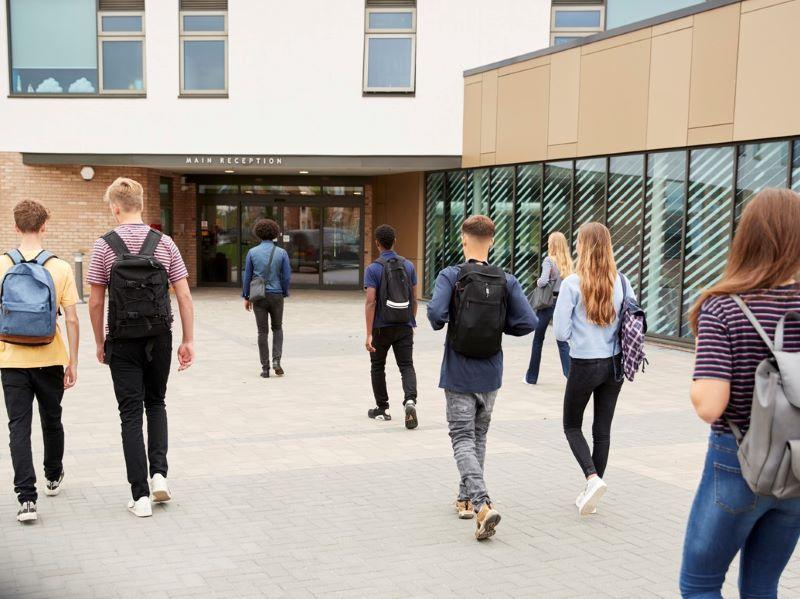For decades, the university application process has been a crushing, stressful process. High school students around the world spend countless hours researching “best fit” universities, taking standardised tests, chasing teachers and counsellors for reference letters, and wrestling with disparate and difficult-to-use application platforms. Then they wait for acceptance and rejection letters to come in.
Worse, many would-be students are not getting reliable information about their best higher education options and are failing to consider the full spectrum of university opportunities available to them. That’s not only a problem for students. Universities also find it increasingly difficult to meet enrolment targets and build diverse classes.
Diversity is a particularly acute challenge, especially when it comes to international student recruitment. Institutions have historically depended on mainstream markets – such as China, India and South-east Asia – that are easier to access. It is harder to reach students in other countries, where internationally bound students are fewer and further between, making travel-based recruiting and other traditional methods uneconomical.
- Digital exclusion hits students hardest at the start of their journey
- How to attract and support non-traditional students in higher education
- Are STEM admissions processes hindering our diversity efforts?
We have entered a hyper-competitive age for higher education, and universities need to question and rethink everything related to finding and attracting prospective students who might fill their seats. Dwindling enrolments, after all, is a trend that could continue for decades.
One promising new approach to solve these problems is flipping the admissions process, where universities compete for students instead of the other way around. EAB, an education consultancy based in Washington DC, has been pioneering this approach with its Greenlight Match and Global Match programmes, supported by its recent acquisition of admissions platform Concourse (which the writer co-founded). Scott Jaschik has been writing about this idea in Inside Higher Ed, and NACAC recently published an article on this topic in the Journal of College Admission.
What does flipping the admissions process mean?
In 2015, Idaho adopted the nation’s first direct admissions system, in which graduating high school seniors received one of two versions of a letter telling them up front that they would be accepted to a collection of in-state schools if they applied. Their grades determined which universities were included in the list of institutions offering direct admission. The letters included Idaho universities only.
While limited in scope, the experiment raised first-time undergraduate enrolments by just over 8 per cent and in-state student enrolment by almost 12 per cent, according to an article published in Research in Higher Education. Other US states are now experimenting with this system, and the Common App also launched a recent trial.
Direct admission is just the beginning. While it provides some benefit, it does not fundamentally change the university selection, application and admissions process. It’s just that students are told up front that if they are willing to go through the process, they will not be rejected.
Flipping the admissions process is about taking this concept to the next level. It is about universities reaching out to individual students and saying: “We want you. Here are the programmes and scholarships that we believe are right for you, in accordance with the interests and aspirations you have expressed. If you would like to attend, you don’t need to apply. We’ve already reviewed your academic credentials and accepted you. Will you take the next step to engage with us to explore our offer?”
Flipping the admissions process means not only telling students they’ve been accepted, but helping them choose a major, taking the time to explain how the proposed academic programme will tie in with their personal objectives, removing obstacles to matriculation, and in general laying out the red carpet.
This model is particularly powerful when it comes to sourcing, attracting, and enrolling international students from non-traditional markets from Albania to Zimbabwe.
Flipping the process means meeting students “where they are”. Institutions need to guide students to the right programmes (or be honest if they don’t have a programme that’s a good fit). It means stripping away everything that’s unnecessary in the admissions process. It means developing systems to track the students’ status and situation at every point, and actively helping them pursue their admission offers. That includes helping students build their financial aid packages to ensure that they have the resources to complete their higher education.
The battle for the bottom (of the funnel)
Institutions of all types can create a more equitable, student-centric enrolment experience. Historically, students from less developed countries have been more likely to “melt” after admission than students from wealthier markets. To the extent that higher education institutions can play a more active role in guiding admitted students along the path to matriculation, they will have more ability to blunt this effect and level the playing field.
How can institutions pay for all this in times of tight budgets? New investments in yield might be funded by reallocating budget from more traditional recruitment activities at the top of the funnel (for example, travel and physical marketing collateral).
College counsellors: an important part of a holistic enrolment process
A complementary success strategy in the increasingly competitive admissions landscape is to work more closely with high school college counsellors. Counsellors have significant influence on where their students ultimately decide to enrol. They are unsung heroes in this ecosystem, often managing huge student caseloads and bearing the brunt of the complexity of the admission process. Something that might seem like a small requirement to a university (“We just need a notarised version of your transcript”) can become a nightmare when multiplied by a caseload of 500 students, especially for counsellors outside the US.
To make matters worse, counsellors are often the last ones to find out which institutions are making admission offers to their students, since they are not participants in the workflows of most admission platforms.
By working more closely with college counsellors (for example, by reducing paperwork, keeping them up to date, proactively delivering information about financial aid, and in general making their lives easier) institutions gain a triple benefit:
- Students who have been admitted are more likely to enrol.
- Institutions receive earlier notice if students holding their offers decide to enrol elsewhere (while this may be bad news, it is far better to find this out sooner rather than later).
- Counsellors are more likely to advocate for their institution with other students.
Rethinking traditional admissions practices
Universities must take more responsibility to close the information gap and break down barriers to enrolment. That means working more closely with college counsellors, rethinking traditional admission practices, paring away unnecessary complexity, investing more resources in yielding admitted students, and exploring the use of advanced technology platforms for direct and flipped admissions.
For many institutions, making this adjustment is a financial necessity. It’s time to adapt to the marketplace and give students a less stressful, more consultative, welcoming and affordable journey to university.
Joe Morrison is the founder and CEO of Concourse (now part of EAB).
Do you work in US higher education? Join us in Los Angeles at THE Campus Live US on November 9-10, where we will unite academics and senior administrators from institutions across the country to discuss how to take on the sector’s shared challenges. Register here to join.
If you found this interesting and want advice and insight from academics and university staff delivered direct to your inbox each week, sign up for the THE Campus newsletter.




comment